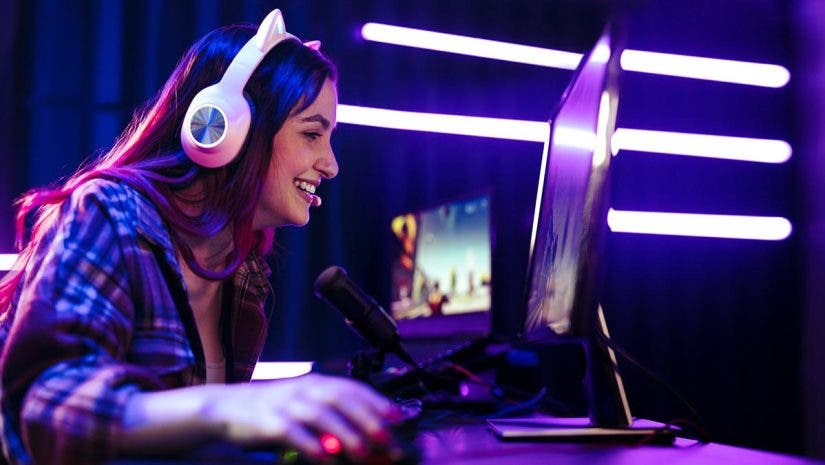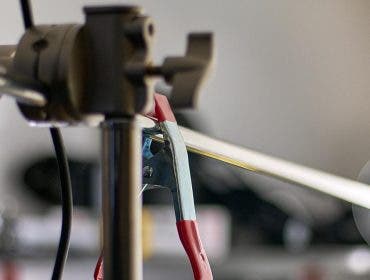Live streaming is a highly effective way to engage with and grow your audience online. It allows viewers to interact with you directly and follow along with what you’re presenting in real-time. Running a live stream is like having your own broadcast network at your fingertips, but without the upfront investment required to build a studio.
Hosting a live broadcast may seem complex, but it’s pretty simple, and almost anyone can do it. If you want to start a YouTube channel, live streaming can be a worthwhile strategy. An iOS or Android smartphone with a reliable internet connection is all you need to start broadcasting yourself live to the world. But if you want to achieve a more professional look, you will need dedicated equipment.
Live Stream Steps
- Lighting
- Camera
- Tripod
- Microphone
- Computer
- Video Capture Card/Device
- Software
- Choose Your Streaming Destination

What you need to get started
To create a professional-looking live stream, you’ll need to invest some money in the following pieces of equipment.
Lighting
You need a good continuous source of light that illuminates the subject’s face. Natural light works, but a ring light or a set of photography lights will give you more control of your scene. Consider adding a few practical lights to your lighting setup to add depth and create a more realistic environment.
Camera
You can use any webcam for live streaming, but a higher-quality camera will deliver a better-looking stream. Many streamers use mirrorless cameras because they support a wide variety of lenses. They are also compact and portable, and some feature 8K video recording capabilities. Make sure your camera has what’s known as a clean HDMI out to avoid capturing camera menus in your feed. You may also want inputs for an external microphone and recording monitor, such as the Blackmagic Design Video Assist 12G.
Tripod
A sturdy and reliable tripod is a must-have accessory for a live-stream setup. Almost any tripod will do, but make sure it’s tall enough to keep the camera above your eye level for a more flattering look. If you plan outdoor live streaming (e.g., from a festival, during a hike, etc.), go for a carbon fiber video tripod with a fluid head. The Tilta Cine Fluid Head with 4-Section Carbon Fiber Tripod, 17.5 lbs Capacity Space Gray, is an excellent example. However, suppose you live stream a podcast, interview, or anything else indoors with limited space. In that case, you may be better off with a table tripod, such as the Vanguard VESTA GO T 233.

Microphone
A USB desktop microphone, such as the Shure MV6 Cardioid USB-C Dynamic Gaming Microphone, is a good choice if you’re sitting at a desk. A lavalier microphone may be a better solution if your presenter needs to move around or stand in front of a whiteboard or green screen.
Computer
You don’t need a fancy computer for live streaming, but there are some advantages to having a more powerful machine. Video encoding is CPU-intensive, but you can offload that work to a graphics card for faster processing. Also, ensure at least 16GB of RAM and a fast and spacious Hard Drive. For this a Solid State Drive (SSD) is a good choice.
Video Capture Card
You’ll need a video capture card to capture the camera’s HDMI signal and bring the video feed from a mirrorless camera, DSLR, or camcorder to your computer. For those with laptops or computers that cannot take a separate capture card, the Elgato Cam Link is a great option. In addition, many new mirrorless cameras allow for direct streaming via USB, though often at the cost of resolution.

Software
Open Broadcast Software Studio (OBS Studio) is the most popular live-streaming application. It is free and open-source, runs on Windows, Mac, and Linux systems, and lets you combine multiple media sources, such as your video camera, microphone, and even a mirror of your computer screen, and send the combined feed to your preferred live streaming platform.
Configure OBS Studio for Your Stream
Setting up OBS for maximum performance is about as easy as you could imagine. The developers behind OBS created a tool called the Auto-Configuration Wizard that helps you optimize the resolution, bitrate, and encoder settings for your preferred streaming platform.
Most streaming services require a stream key, which securely grants the software access to your account. Some platforms have proprietary security setups, which the wizard will walk you through step by step.
Once the wizard is complete, you will need to set up a scene with your media sources. OBS offers a substantial array of source options. You will need at least one audio and one video source to create a scene. You can find details for refining your settings in the OBS QuickStart guide.
OBS Studio Alternatives
StreamLabs OBS is a great alternative if you’re looking for a more complete package that includes user engagement and monetization features.
Riverside is a browser-based program for recording, editing, and live streaming. It lets you customize your stream with logos and background styles, includes a teleprompter, and automatically generates clips and summaries.
There are also services and software that help you stream to multiple platforms at the same time. The most popular are:
- Restream: Restream is a cloud-based service that broadcasts your stream to many streaming services and social media platforms so you can engage your audience on Twitter, Facebook, and YouTube simultaneously.
- Streamlabs: Streamlabs offers a free desktop program for Windows and Mac and a browser-based multistreaming platform. You can stream simultaneously to Facebook, YouTube, LinkedIn, Twitch, X, TikTok, Kick, and Trovo.
- Riverside: Riverside supports multistreaming on YouTube, LinkedIn, Instagram, and any custom RTMP platform.

Dedicated Streaming Gear
For a professional streaming setup, you may need more specific equipment than a camera and a computer. For example, the Stream Deck XL Keypad features 32 customizable LCD keys that allow you to control the streaming, adjust audio levels, switch between multiple cameras, trigger onscreen resources, modify lighting, change scenes, and more. It integrates with the most popular live-streaming platforms, works smoothly with your system, allowing you to streamline whilst operating your computer, and packs all its features in a portable and compact design.
If you have already worked with DaVinci Resolve, you’ll appreciate the Blackmagic Design ATEM Mini Pro ISO HDMI Live Stream Switcher that comes with headphones and a 4K/60 HDMI to HDMI extender. It records up to five separate H.264 video streams in real-time, video and audio, allowing you to re-edit and remix your show. Furthermore, it saves everything as a DaVinci Resolve project, meaning all you have to do to open your live production to edit it is a single click. It features four standard HDMI inputs, a USB webcam output, an audio mixer with EQ and dynamics, a green screen chroma key, and many others. The Blackmagic Design ATEM Mini Pro ISO HDMI Live Stream Switcher is made for a record-to-web audience.
Choose Your Streaming Destination
The platform you choose for live streaming will depend on who and where your audience is. Some popular options include:
- Twitch.tv: Video games and hobbies.
- YouTube: Any subject. Although, the YouTube Live service is only available to established content creators.
- Facebook: Any subject. Use Facebook Live at any time on your personal Facebook page or create a scheduled live event to invite guests.
- Twitter(X): Any subject. Easily reach your followers and increase discoverability with subject hashtags.
- Instagram: Any subject. Use Instagram Live to interact with your existing followers and to reach a bigger audience.
- Website: Any subject. Embedded streams enable businesses and individuals to run live-stream events directly from their websites.
- Webinar platforms: Custom landing page for businesses to host live video presentations and product pitch events.
It’s Time to Start Streaming
With all the gear in place and all settings configured, hitting the button to start your first live stream is all that’s left to do! Within seconds, your live camera feed will appear on your platform of choice or multiple platforms simultaneously. Now, you’re ready to build your audience and share your knowledge or pastime with the world.






